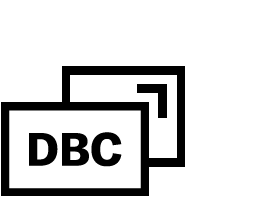DBC In Motion
The concept of motion graphics isn’t new.
Not too long ago infographics were the "secret" to creating interesting shareable content. Infographics became the trend because they allowed wordy, complex information to be condensed into catchy visuals that, according to studies, deliver information more effectively than plain text.
Some ideas are just easier to present in the form of graphics, other ideas are easier to explain in motion. Complex explanations can become vastly simplified when you can show rather than tell, and showing is a lot easier when you have text, animation and audio at your disposal.
As the Internet becomes over-saturated with the current forms of content, brands have to push harder to be seen. Motion graphics, which play in to viewers’ current love of video content, and the ease with which you can get a point across quickly and digestible on your site are the keys to more views.
Logo Designed by S. Murdoch, then animated by DBC
Some information is too complex to present in a still image. An infographic has to be analyzed and sometimes over simplified. Motion graphics can display different images and use video and audio to give a bigger picture. This means they can be more memorable than just a still image, in the same way an info-graphic is more memorable than a simple chart or text.
There's also the benefit of low-cost production. To create a 30-second video commercial, a company could expect to spend at least $50, 000 just for production purposes. Such a high cost made high-end commercials exclusive to businesses with large marketing budgets. Because motion graphics can be created entirely on a computer, a 30-second video can be produced at a significant fraction of a commercial.
From fun gifs to elaborate videos, consumers love motion graphics.
Take a look at some fun motion elements we've been working on.
And an awesome example of motion done well
At DBC, we're always moving
Thumbnail Image from http://giphy.com/gifs/RtfosHwQtOrhS






